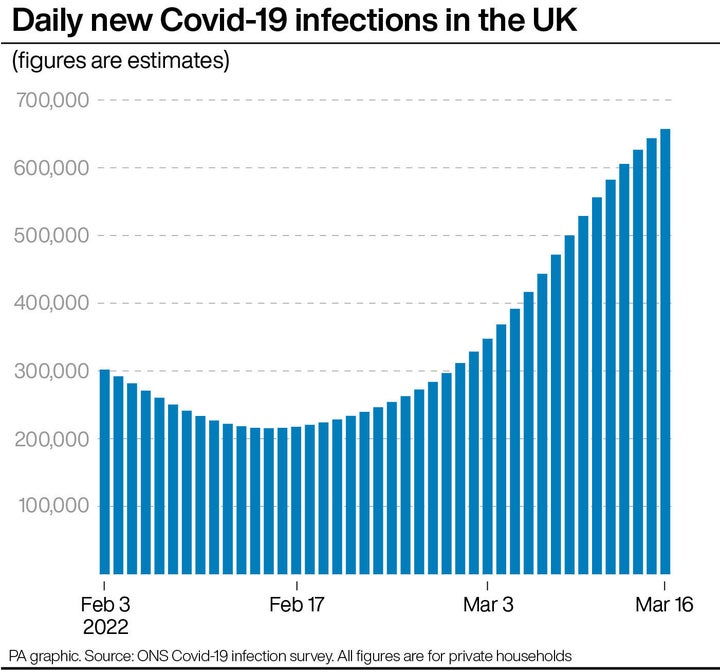
The NHS has refreshed its list of Covid symptoms on its website to finally include cold-like signs, more than two years into the pandemic and a year after the virus’ impact on the body seemed to change.
During the first wave of infections, Covid appeared to cause a high temperature, a continuous cough and a loss of smell or taste.
But when the Delta variant became the dominant strain in the UK last year, the symptoms replicated the common cold, causing headaches, sneezing and a sore throat.
It appears the NHS website has only been updated to reflect this now, in April, even though the World Health Organisation has had other symptoms listed for some time.
Here’s the updated symptoms list:
A high temperature
A new continuous cough
A loss or change to your sense of smell or taste
A shortness of breath
Feeling tired or exhausted
An aching body
A headache
A sore throat
A blocked or runny nose
Loss of appetite
Diarrhoea
Feeling sick or being sick
The website adds that these symptoms are “very similar” to illnesses such as colds and flus.
According to PA news agency, any changes in the list of symptoms would have to be signed off by the government’s chief medical officer, Professor Chris Whitty.
How could this affect Covid transmission?
The change in Covid symptoms may help people understand if they have the virus themselves, although it’s impossible to know for sure without using a test.
It is no longer obligatory for people who test positive to self-isolate and free universal Covid testing has ended for people in England, which has raised concerns about how effectively the UK is tackling the pandemic.
However, the NHS website advises anyone who has these symptoms to “try to stay at home and avoid contact with other people”.
Covid infections in the UK have also skyrocketed, with five million people estimated to be infected. This means that for the week ending March 26, ONS believes one in every 13 people in England had the virus.

The NHS recommends anyone with the symptoms listed on its website to avoid close contact with people who are “at higher risk of getting seriously ill from Covid”, and suggests people only go back to their normal activities when they feel better or do not have a high temperature.
Co-founder of the ZOE Covid study app, epidemiologist Professor Tim Spector of King’s College London, praised the changes in a tweet on Sunday.
He wrote: “NHS official main symptoms of coronavirus have finally changed after two years of lobbying and Zoe app user input – hurrah!
“Pity they have the order wrong – but it’s a start and could help reduce infections. Thanks ZOE loggers!”
Spector has previously claimed headaches, runny noses, sore throat and sneezing were the most common Covid symptoms.
Only in March, Spector renewed his attack on the government’s list of symptoms, criticising No.10′s “refusal” to acknowledge the “wider array of symptoms”.
He suggested the outdated list, along with the end of free testing and self-isolation, could have helped push up infection rates.
He said: “The Government’s refusal to recognise the wide array of symptoms and to drop isolation advice and testing is likely driving the incredible number of cases we see today.
“Many people are no longer isolating when they have symptoms, either because they feel they don’t have to anymore or because they or their employers still don’t recognise symptoms like runny nose or sore throat as Covid.”